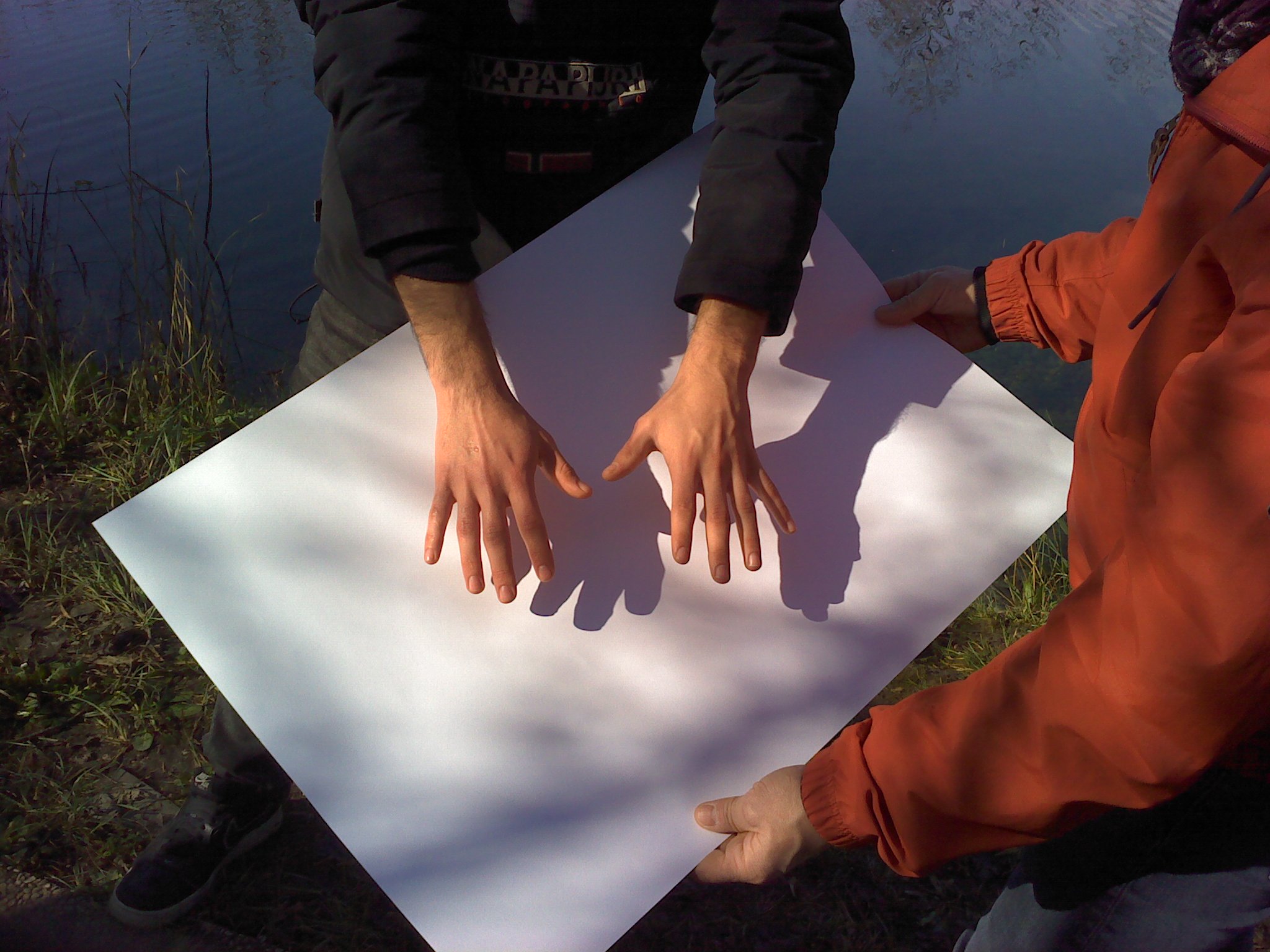ΔT -
In search of mirages to reflect on the delicate balance between ecosystems
an artscience partecipative workshop by LIMINAL RESEARCH ETS
Concept and performance:
Francesco Scarel, independent researcher, teacher at Master in Science Communication at SISSA - Trieste
Michele Libralato, civil engineer and researcher at the University of Udine

The ΔT - DeltaT - laboratory highlights our sensitivity of observation, allowing us to visualize the continuous exchange of energy between bodies of different natures in real-time. Using a thermal camera, we can see infrared (IR) emissions that are otherwise invisible to the human eye. This enables us to explore images to deepen our understanding of thermal equilibrium processes and develop a greater emotional awareness of the relationship we build with the surrounding environment.
The goal of the ΔT - DeltaT - laboratory is to raise awareness about the relationship between humans and the environment in the Anthropocene era. The adopted method involves the direct experience of natural phenomena invisible to the naked eye, such as thermal exchange and infrared rays, in order to:
- Broaden thinking and perception of the surrounding world
- Suggest different perspectives
- Promote a level of awareness that encourages citizen engagement in informed discussions on the significant issues that scientific and technological progress brings to society
This is achieved through a constant process of curiosity and innovation.
Communication between science and society becomes even more crucial when addressing the challenges of climate change. At the core of the changes disrupting the balance of our planet is temperature: fluctuations of just a few degrees in the Earth's average temperature can upheave our relationship with natural elements and other living species, our way of living, and our mindset tied to the illusory certainty of unlimited growth.
Temperature is a physical property that we can measure. In a controlled environment, we can also regulate it, which has allowed the human species to expand its dominance on Earth.
But what happens if the thermal balance of our planet is compromised?

The heat emitted by bodies is invisible to the eyes, yet essential for life on our planet. Thermal balance is a critical factor determined by the amount of energy Earth receives from the Sun and the energy it radiates back into space.
Even a slight alteration of this balance can cause serious damage to sensitive ecosystems. Consider our own bodies: a mere increase of 1°C can lead to a feverish state.
These alterations can also disrupt our way of living in urban centers, impact our economy (sectors such as agriculture, tourism, and fishing rely on predictable temperature patterns), and affect our security.

IL WORKSHOP
Inspired by the filmmaker Werner Herzog and his expedition captured in the film “Fata Morgana,” the Delta T workshop evokes a journey into the desert in search of mirages.
We use a special technology: a thermal camera that allows us to analyze reality by capturing IR rays emitted or reflected by bodies, whether they are living (plants, animals, humans) or inanimate (rocks, water, metals, asphalt).
The goal is to conduct an aesthetic and creative exploration using a professional scientific tool.
In the first part of the workshop, we explore the basics of the physics of light, including the visible light spectrum and electromagnetic waves not visible to the human eye, to understand what the colors we perceive are. This will introduce infrared (IR) rays and the thermal camera as a tool to visualize them, all conducted in an informal and experiential setting.

In a second part, the intention is to explore natural, urban and extra-urban environments to raise awarenes on the concept of temperature and its importance in the ecosystems in which we live. Using this technology we can view the exchange of heat in real time between bodies, and record the different behaviors of objects exposed to different temperatures in places such as industrial areas, squares, park natural resources, roads and public spaces.
For example, we can recognize the mitigating effect of natural areas
within the city, while, on the contrary, we ca identify the negative impact caused by excessive presence of asphalted spaces or parked cars
along the road.
Furthermore, participants will be able to experience their continuous interaction with the surrounding environment, for example by visualizing the imprint left by one's hand on different surfaces, ephemeral traces left by heat. Or admire the dispersion of the heat released by the skin when immersed in cold water, or from the superficial veins at the back of the hand.
At the end of the walk (about 40 minutes) the images and videos taken with the thermal camera can be shared and projected, to comment on the experience together.
For example, we can recognize the mitigating effect of natural areas
within the city, while, on the contrary, we ca identify the negative impact caused by excessive presence of asphalted spaces or parked cars
along the road.
Furthermore, participants will be able to experience their continuous interaction with the surrounding environment, for example by visualizing the imprint left by one's hand on different surfaces, ephemeral traces left by heat. Or admire the dispersion of the heat released by the skin when immersed in cold water, or from the superficial veins at the back of the hand.
At the end of the walk (about 40 minutes) the images and videos taken with the thermal camera can be shared and projected, to comment on the experience together.


